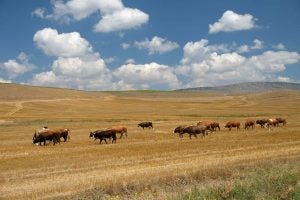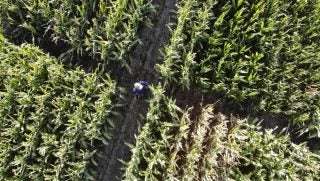Plant diversity in grazing lands leads to greater forage production and stability of forage production over time, making it an important consideration for ranchers.
The study, published in Applied Vegetation Science by an international team of researchers led by Dr. Grégory Sonnier and Dr. Betsey Boughton of Archbold Biological Station has unveiled significant insights into how plant diversity and management practices influence the productivity and ecological stability of North American grazing lands.
The data reviewed spans nearly three decades and is drawn from various ecosystems across the United States. The team used extensive satellite data on plant productivity alongside detailed plant diversity measures.
“Our work adds to the body of evidence that plant communities with a variety of plant species help promote grazing land productivity and buffer it from climatic variations,” Boughton said. “We found this is generally true for grazing lands across the U.S. because our work used data from large science networks including the U.S. Department of Agriculture’s Long-term Agroecosystem Research Network and the National Ecological Observatory Network. This information can help ranchers manage resilient grazing lands.”
The study also explored the effects of management intensification, such as increased grazing density and planting non-native species, on grazing land ecosystems. Results indicate that the intensification method matters, with distinct methods affecting diversity differently. Furthermore, while intensification can boost productivity in the short term, it may reduce biodiversity and alter the resilience of these ecosystems to drought, particularly when non-native grasses are introduced. A loss of resilience can decrease productivity in the long term.

“Agricultural management intensification leads to greater food production. These management activities may include increasing the number of animals on the landscape and/or planting more productive plant species,” explained Boughton. “We found that planted pastures that have lower plant diversity are less resilient to drought in some grazing lands, so that’s why it is beneficial to retain native prairies on operations that have planted pastures.”
The results of this study coincide with another recent Archbold study that synthesized 17 years of data to understand how diverse ranch landscapes provide multiple benefits to society. That study showed that planted pastures and native prairies offer different benefits to society and that the two together were essential for the economic and environmental sustainability of subtropical humid grazing lands.
The implications of this research are significant for policymakers, land managers, and conservationists seeking to balance productivity with ecological health in grazing landscapes. “Plant diversity is a hub for ecosystem services. It underpins forage production, wildlife habitat, and carbon capture, and it helps provide a margin of stability in these services,” said Boughton.
“Based on these results, we believe ranchers should conserve native grasslands, and federal and state conservation programs should help achieve this goal,” Sonnier said.


